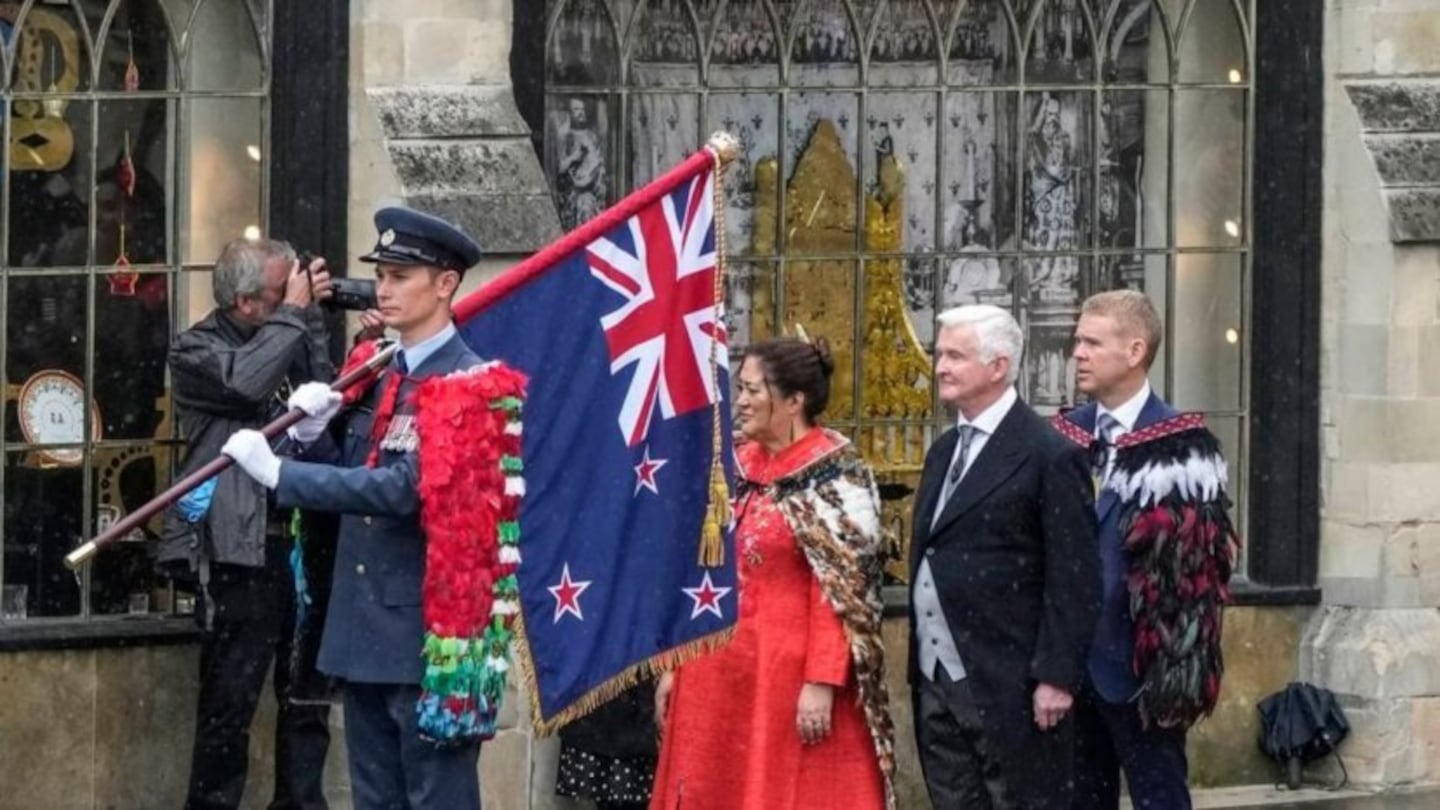When the bells of Westminster Abbey rang to herald a new era in the British monarchy, it actually signalled whether an institution based entirely on an arcane concept of birthright should still exist.
It was a parade where King Charles, by edict, flipped the script, demanding that it mean something to everyone.
This was the coronation that was going to be inclusive, diverse and multi-ethnic, where guests from the 33 commonwealth nations were even given the option of wearing their national dress.
But it fell spectacularly flat in an Aotearoa-NZ context.
It turns out the officiousness of officials is more arcane than the British monarchy.
When I touched down in the UK, the home of my Dad who’s a British national, I headed out to Pirbridge military base southwest of London, where I met Māori soldiers from the New Zealand Defence Force. They told me in no uncertain terms that there was no Māori component in the proceedings of Saturday’s coronation.
'Cultural element' dumped
The NZDF kapa haka team was reportedly dumped. A press officer told me in a statement there was physically no room for a ‘Māori cultural element’ at the proceedings.
They tried to add a Māori touch by decking out the flag bearer in Westminster Abbey, Sergeant Hayden Smith, with the NZDF’s cloak, Ngā Tapuwae. But giving a feathered item of clothing a Māori name doesn’t give it authenticity. Just ask NZ Golf about the reaction to its attempt at this.
Just when I was hunkering down to write the NZDF story, I got a message from my colleague Kereama Wright from the iwi media news collective, Aukaha, about what was going down at an informal gathering of the NZ guests at New Zealand House.
Former Labour minister and Auckland mayor Phil Goff had insulted the Māori King by failing to follow any form of karakia or greet the head of a 165-year old Māori institution.
Goff acknowledged the prime minister and Governor-General, and then gave an unbelievably tone-deaf anecdote about how exciting the coronation would be because nobody there had experienced the crowning of a monarch before.
History training needed
The Māori King was crowned in 2006 of course. Some people at this London hui were even eyewitnesses to the coronation of his late mother Te Arikinui Dame Te Atairangikāhu in 1966.
Let’s hope our new history in schools curriculum makes it to the cabinet and that his boss Nanaia Mahuta, the first Māori woman to hold the job of Foreign Affairs minister, makes her reps undergo some history training themselves.
The next day, Whakaata Māori turned up to a bilateral meeting at number 10 Downing St. with the UK’s first ethnically diverse Prime Minister, Rishi Sunak.
We were told it was first come, first serve. But when we got there, there was a list. Every man, dog, carriage and caterer was on it. But there was no representative of Māori media.
I then went to a scheduled press conference, where nobody turned up. We were later told Prime Minister Hipkins had decided to have it directly after the meeting with Sunak. We’d missed out but got an offer of a written response to any questions.
'Pale and stale'
But written statements don’t work well on TV.
Only 35 percent of London is white and British. I was hoping to show Kereama how the UK has evolved and the ethnic diversity at home and abroad.
Then I saw the crowds and realized he might’ve caught wind of that anyway. They were predominantly, small, pale and stale, including the republican protesters.
I worry for the future of my first home Aotearoa, as much as I do my second.
King Charles III is by all accounts a good dude with an agenda on climate change and religious freedom. He reportedly loves everything about the Māori world too.
I hope his gatekeepers - sorry - palace officials and their equivalents in New Zealand let him take up the invitation by Kīngi Tuheitia to meet with Māori at Tūrangawaewae marae in the near future.


